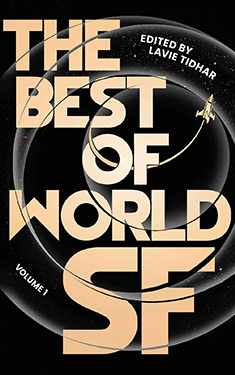
Added By: Administrator
Last Updated:
House of Leaves
| Author: | Mark Z. Danielewski |
| Publisher: |
Pantheon Books, 2000 |
| Series: | |
|
This book does not appear to be part of a series. If this is incorrect, and you know the name of the series to which it belongs, please let us know. |
|
| Book Type: | Novel |
| Genre: | Horror |
| Sub-Genre Tags: | Psychological Weird (Horror) Mythic Fiction (Horror) |
| Awards: | |
| Lists: | |
| Links: |
|
| Avg Member Rating: |
|
|
|
|
Synopsis
Years ago, when House of Leaves was first being passed around, it was nothing more than a badly bundled heap of paper, parts of which would occasionally surface on the Internet. No one could have anticipated the small but devoted following this terrifying story would soon command. Starting with an odd assortment of marginalized youth -- musicians, tattoo artists, programmers, strippers, environmentalists, and adrenaline junkies -- the book eventually made its way into the hands of older generations, who not only found themselves in those strangely arranged pages but also discovered a way back into the lives of their estranged children.
Now, for the first time, this astonishing novel is made available in book form, complete with the original colored words, vertical footnotes, and newly added second and third appendices.
The story remains unchanged, focusing on a young family that moves into a small home on Ash Tree Lane where they discover something is terribly wrong: their house is bigger on the inside than it is on the outside.
Of course, neither Pulitzer Prize-winning photojournalist Will Navidson nor his companion Karen Green was prepared to face the consequences of that impossibility, until the day their two little children wandered off and their voices eerily began to return another story -- of creature darkness, of an ever-growing abyss behind a closet door, and of that unholy growl which soon enough would tear through their walls and consume all their dreams.
Excerpt
I saw a film today, oh boy ...
- The Beatles
While enthusiasts and detractors will continue to empty entire dictionaries attempting to describe or deride it, "authenticity" still remains the word most likely to stir a debate. In fact, this leading obsession-to validate or invalidate the reels and tapes-invariably brings up a collateral and more general concern: whether or not, with the advent of digital technology, image has forsaken its once unimpeachable hold on the truth.
For the most part, skeptics call the whole effort a hoax but grudgingly admit The Navidson Record is a hoax of exceptional quality. Unfortunately out of those who accept its validity many tend to swear allegiance to tabloid-UFO sightings. Clearly it is not easy to appear credible when after vouching for the film's verity, the discourse suddenly switches to why Elvis is still alive and probably wintering in the Florida Keys. One thing remains certain: any controversy surrounding Billy Meyer's film on flying saucers has been supplanted by the house on Ash Tree Lane.
Though many continue to devote substantial time and energy to the antinomies of fact or fiction, representation or artifice, document or prank, as of late the more interesting material dwells exclusively on the interpretation of events within the film. This direction seems more promising, even if the house itself, like Melville's behemoth, remains resistant to summation.
Much like its subject, The Navidson Record itself is also uneasily contained - whether by category or lection. If finally catalogued as a gothic tale, contemporary urban folkmyth, or merely a ghost story, as some have called it, the documentary will still, sooner or later, slip the limits of any one of those genres. Too many important things in The Navidson Record jut out past the borders. Where one might expect horror, the supernatural, or traditional paroxysms of dread and fear, one discovers disturbing sadness, a sequence on radioactive isotopes, or even laughter over a Simpsons episode.
In the 17th century, England's greatest topographer of worlds satanic and divine warned that hell was nothing less than "Regions of sorrow, doleful shades, where peace/ And rest can never dwell, hope never comes/ That comes to all" thus echoing the words copied down by hell's most famous tourist: "Dinanzi a me non fuor cose create/ Se non etterne, e io etterna duro./ Lasciate ogni speranza, voi ch'entrate."
Even today many people still feel The Navidson Record, in spite of all its existential refinements and contemporary allusions, continues to reflect those exact sentiments. In fact a few eager intellectuals have already begun to treat the film as a warning in and of itself, perfectly suited for hanging whole above the gates of such schools as Architectonics, Popomo, Consequentialism, Neo-Plasticism, Phenomenology, Information Theory, Marxism, Biosemiotics, to say nothing of psychology, medicine, New Age spirituality, art and even Neo-Minimalism. Will Navidson, however, remains stalwart in his insistence that his documentary should be taken literally. As he himself says, "... all this, don't take it as anything else but this. And if one day you find yourself passing by that house don't stop, don't slow down, just keep going. There's nothing there. Beware."
Considering how the film ends, it is not surprising that more than a handful of people have decided to heed his advice.
The Navidson Record did not first appear as it does today. Nearly seven years ago what surfaced was "The Five and a Half Minute Hallway" - a five and a half minute optical illusion barely exceeding the abilities of any NYU film school graduate. The problem, of course, was the accompanying statement that claimed all of it was true.
In one continuous shot, Navidson, whom we never actually see, momentarily focuses on a doorway on the north wall of his living room before climbing outside of the house through a window to the east of that door, where he trips slightly in the flower bed, redirects the camera from the ground to the exterior white clapboard, then moves right, crawling back inside the house through a second window, this time to the west of that door, where we hear him grunt slightly as he knocks his head on the sill, eliciting light laughter from those in the room, presumably Karen, his brother Tom, and his friend Billy Reston - though like Navidson, they too never appear on camera-before finally returning us to the starting point, thus completely circling the doorway and so proving, beyond a shadow of a doubt, that insulation or siding is the only possible thing this doorway could lead to, which is when all laughter stops, as Navidson's hand appears in frame and pulls open the door, revealing a narrow black hallway at least ten feet long, prompting Navidson to re-investigate, once again leading us on another circumambulation of this strange passageway, climbing in and out of the windows, pointing the camera to where the hallway should extend but finding nothing more than his own backyard-no ten foot protuberance, just rose bushes, a muddy dart gun, and the translucent summer air - in essence an exercise in disbelief which despite his best intentions still takes Navidson back inside to that impossible hallway, until as the camera begins to move closer, threatening this time to actually enter it, Karen snaps, "Don't you dare go in there again, Navy," to which Tom adds, "Yeah, not such a hot idea," thus arresting Navidson at the threshold, though he still puts his hand inside, finally retracting and inspecting it, as if by seeing alone there might be something more to feel, Reston wanting to know if in fact his friend does sense something different, and Navidson providing the matter-of-fact answer which also serves as the conclusion, however abrupt, to this bizarre short: "It's freezing in there."
Dissemination of "The Five and a Half Minute Hallway" seemed driven by curiosity alone. No one ever officially distributed it and so it never appeared in film festivals or commercial film circles. Rather, VHS copies were passed around by hand, a series of progressively degenerating dubs of a home video revealing a truly bizarre house with notably very few details about the owners or for that matter the author of the piece.
Less than a year later another short surfaced. It was even more hotly sought after than "The Five and a Half Minute Hallway" and resulted in some fervent quests for Navidson and the house itself, all of which, for one reason or another, failed. Unlike the first, this short was not a continuous shot, prompting many to speculate that the eight minutes making up "Exploration #4" were in fact bits of a much larger whole.
The structure of "Exploration #4" is highly discontinuous, jarring, and as evidenced by many poor edits, even hurried. The first shot catches Navidson mid-phrase. He is tired, depressed and pale. "- days, I think. And, I ... I don't know." [Drink of something; unclear what.] "Actually I'd like to burn it down. Can't think clearly enough to do it though." [Laughs] "And now ... this."
The next shot jumps to Karen and Tom arguing over whether or not to "go in after him." At this point it remains unclear to whom they are referring.
There are several more shots.
Trees in winter.
Blood on the kitchen floor.
One shot of a child (Daisy) crying.
Then back to Navidson: "Nothing but this tape which I've seen enough times, it's more like a memory than anything else. And I still don't know: was he right or just out of his mind?"
Followed by three more shots.
Dark hallways.
Windowless rooms.
Stairs.
Then a new voice: "I'm lost. Out of food. Low on water. No sense of direction. Oh god ..." The speaker is a bearded, broad shouldered man with frantic eyes. He speaks rapidly and appears short of breath: "Holloway Roberts. Born in Menomonie, Wisconsin. Bachelor's from U. Mass. There's something here. It's following me. No, it's stalking me. I've been stalked by it for days but for some reason it's not attacking. It's waiting, waiting for something. I don't know what. Holloway Roberts. Menomonie, Wisconsin. I'm not alone here. I'm not alone."
Thus bringing to an end this strange abstract which as the release of The Navidson Record revealed was sparingly incomplete. Then for two years nothing. Few clues about who any of these people were, though eventually a number of photographers in the news community did recognize the author as none other than Will Navidson, the prize-winning photojournalist who won the Pulitzer for his picture of a dying girl in Sudan. Unfortunately this discovery only generated a few months of heated speculation, before, in the absence of press, corroboration, the location of the house or for that matter any comment by Navidson himself, interest died out. Most people just wrote it off as some kind of weird hoax, or, because of the unusual conceit, an aberrant UFO sighting. Nevertheless the deteriorating dubs did circulate and in some trendy academic circles a debate began: was the subject a haunted house? What did Holloway mean by "lost"? How could anyone be lost in a house for days anyway? Furthermore, what was someone with Navidson's credentials doing creating two strange shorts like these? And again, was this artifice or reality?
Certainly a good deal of the debate was sustained by a bit of old fashioned cultural elitism. People talked about the Navidson pieces because they were lucky enough to have seen them. Lee Sinclair suspects a majority of professors, students, SoHo artists and avant-garde filmmakers who spoke-and even wrote-so knowingly about the tapes, more than likely had never even viewed one frame: "There just weren't that many copies available."
While "The Five and a Half Minute Hallway" and "Exploration #4" have been respectively called a "teaser" and a "trailer", they are also, in their own right, peculiar cinematic moments. On a purely symbolic level, they afford a vast potential for examination: the compression of space, the power of the imagination to decompress that space, the house as trope for the unlimited and the unknowable etc., etc. On a strictly visceral level, they provide ample shocks and curiosities. However, the most unnerving aspect about both pieces is their ability to convince us that everything really happened, some of which can be attributed to the verifiable elements (Holloway Roberts, Will Navidson et al.), but most of which must be chalked up to the starkness of the production-the absence of make-up, expensive sound tracks, or crane shots. Except for framing, editing, and in some cases sub-titles, there is virtually no room for creative intrusion.
Who would have suspected that almost three years after "The Five and a Half Minute Hallway" began appearing on VHS, Miramax would quietly release The Navidson Record in a limited run and almost immediately unsettle audiences everywhere. Since the opening three years ago last April in New York and Los Angeles, The Navidson Record has been screened nationwide, and while hardly a blockbuster, the film continues to generate revenues as well as interest. Film periodicals frequently publish reviews, critiques and letters. Books devoted entirely to The Navidson Record now appear with some regularity. Numerous professors have made The Navidson Record required viewing for their seminars, while many universities already claim that dozens of students from a variety of departments have completed doctoral dissertations on the film. Comments and references frequently appear in Harper's, The New Yorker, Esquire, American Heritage, Vanity Fair, Spin as well as on late night television. Interest abroad is equally intense. Japan, France and Norway have all responded with awards but to this day the spectral Navidson has yet to appear let alone accept any one of these. Even the garrulous Weinstein brothers remain unusually reticent about the film and its creator.
Interview magazine quoted Harvey Weinstein as saying, "It is what it is."
The Navidson Record now stands as part of this country's cultural experience and yet in spite of the fact that hundreds of thousands of people have seen it, the film continues to remain an enigma. Some insist it must be true, others believe it is a trick on par with the Orson Welles radio romp The War of the Worlds. Others could care less, admitting that either way The Navidson Record is a pretty good tale. Still many more have never even heard of it.
These days, with the unlikely prospect of any sort of post-release resolution or revelation, Navidson's film seems destined to achieve at most cult status. Good story telling alone will guarantee a healthy sliver of popularity in the years to come but its inherent strangeness will permanently bar it from any mainstream interest.
Copyright © 2000 by Mark Z. Danielewski
Reviews
Images
No alternate cover images currently exist for this novel.



















 Full Details
Full Details






